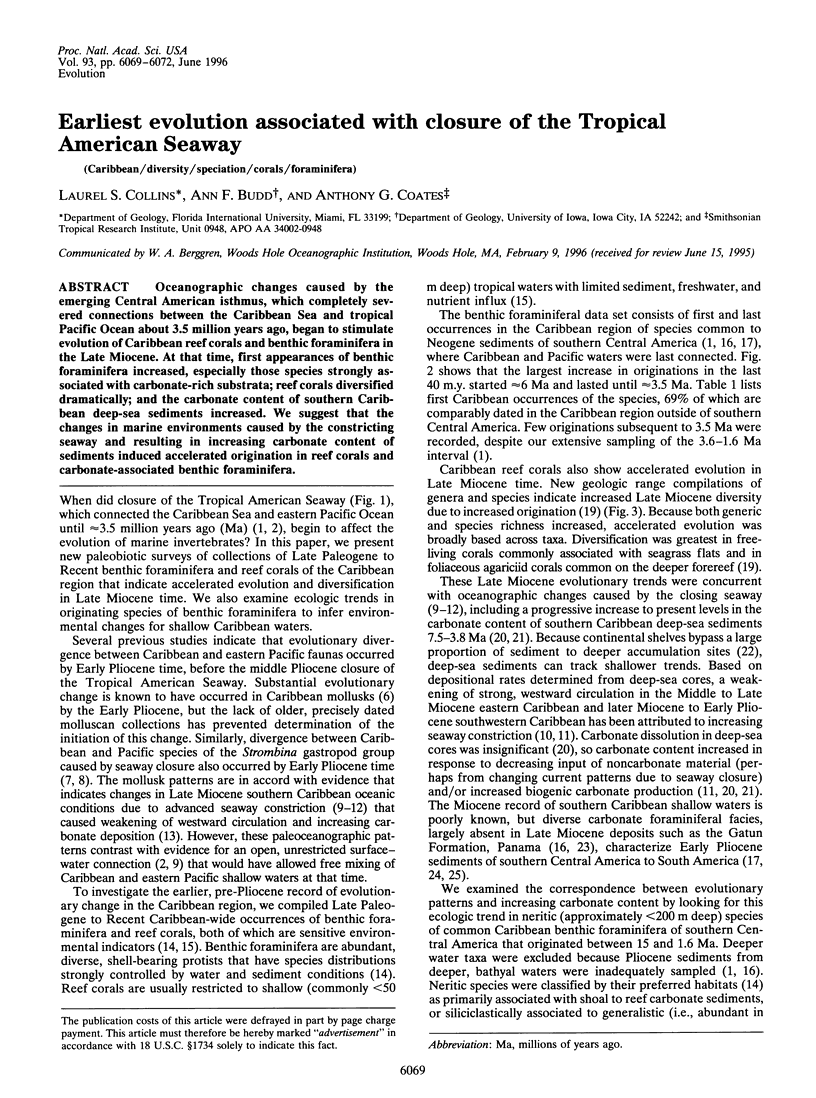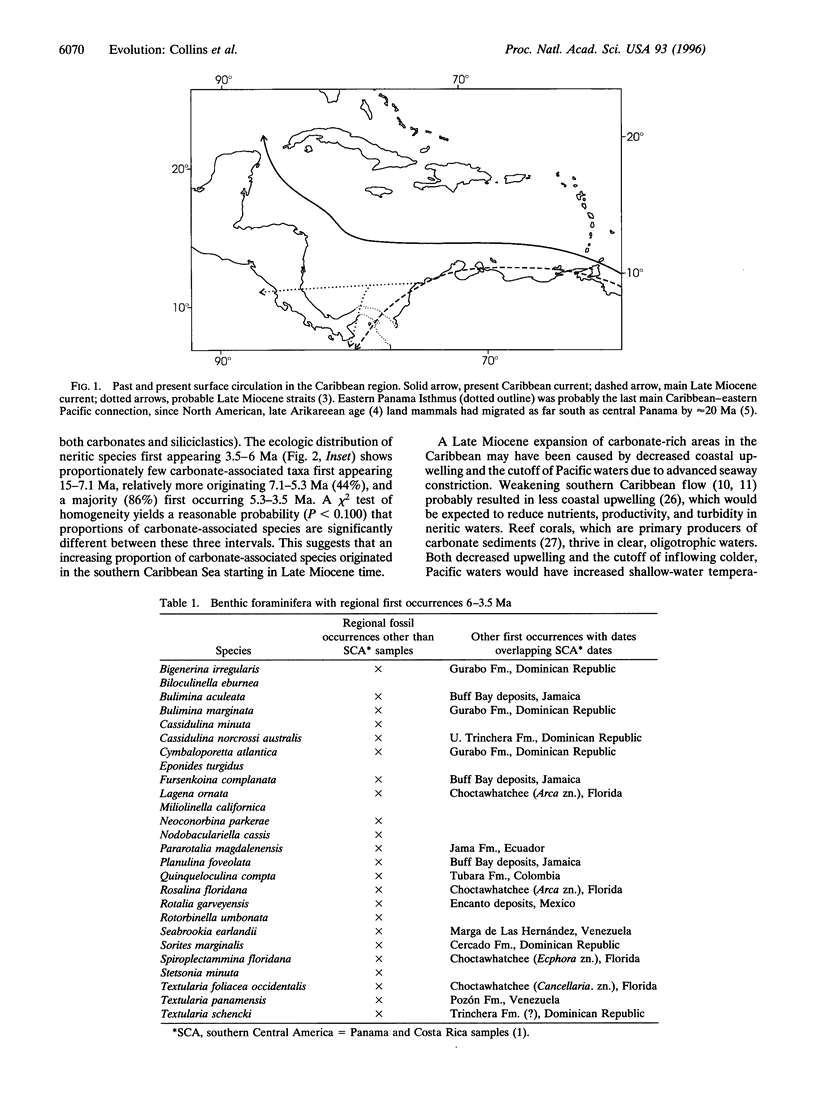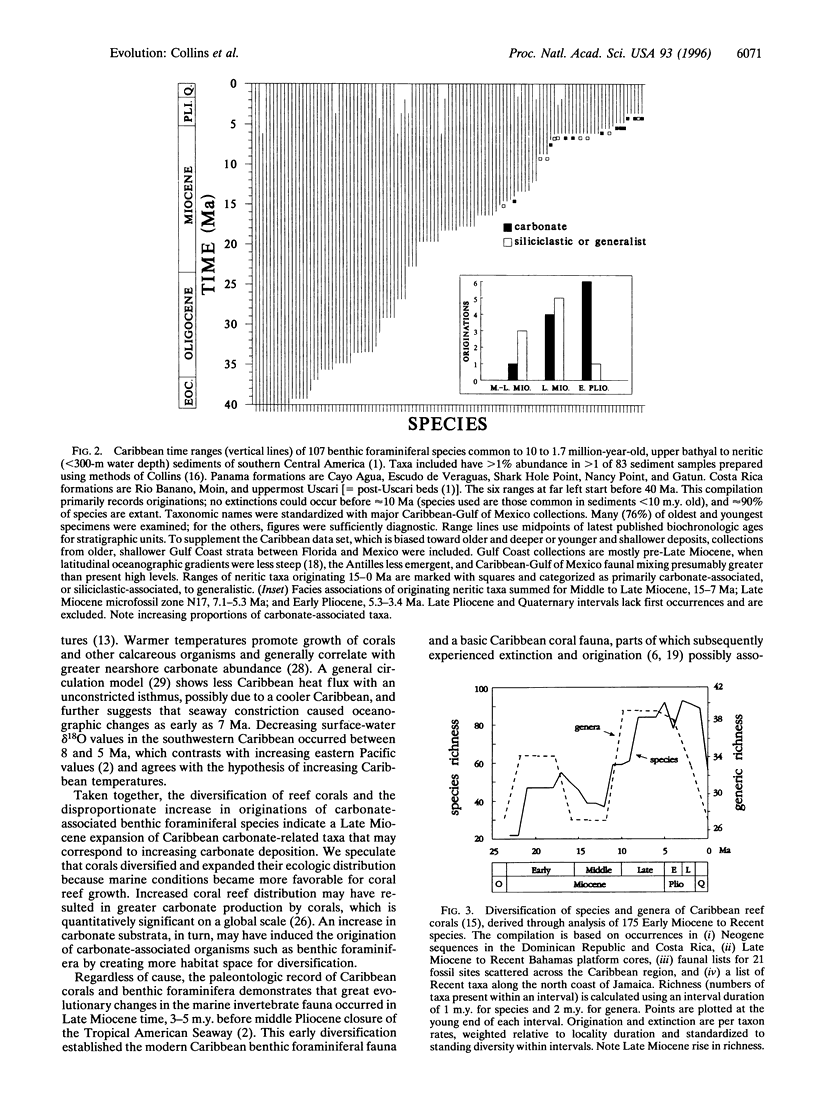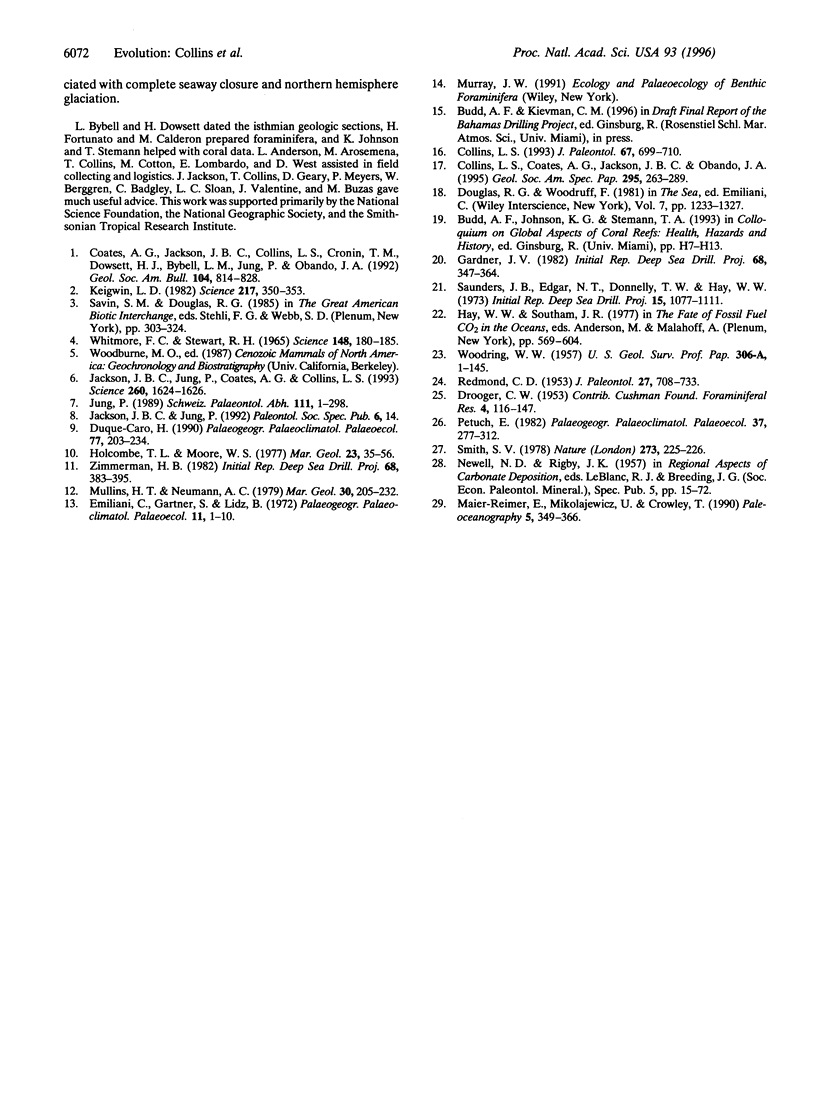Abstract
Oceanographic changes caused by the emerging Central American isthmus, which completely severed connections between the Caribbean Sea and tropical Pacific Ocean about 3.5 million years ago, began to stimulate evolution of Caribbean reef corals and benthic foraminifera in the Late Miocene. At that time, first appearances of benthic foraminifera increased, especially those species strongly associated with carbonate-rich substrata; reef corals diversified dramatically; and the carbonate content of southern Caribbean deep-sea sediments increased. We suggest that the changes in marine environments caused by the constricting seaway and resulting in increasing carbonate content of sediments induced accelerated origination in reef corals and carbonate-associated benthic foraminifera.
Full text
PDF



Images in this article
Selected References
These references are in PubMed. This may not be the complete list of references from this article.
- Jackson J. B., Jung P., Coates A. G., Collins L. S. Diversity and extinction of tropical american mollusks and emergence of the isthmus of panama. Science. 1993 Jun 11;260(5114):1624–1626. doi: 10.1126/science.260.5114.1624. [DOI] [PubMed] [Google Scholar]
- Keigwin L. Isotopic paleoceanography of the Caribbean and East pacific: role of panama uplift in late neogene time. Science. 1982 Jul 23;217(4557):350–353. doi: 10.1126/science.217.4557.350. [DOI] [PubMed] [Google Scholar]
- Whitmore F. C., Jr, Stewart R. H. Miocene Mammals and Central American Seaways: Fauna of the Canal Zone indicates separation of Central and South America during most of the Tertiary. Science. 1965 Apr 9;148(3667):180–185. doi: 10.1126/science.148.3667.180. [DOI] [PubMed] [Google Scholar]



